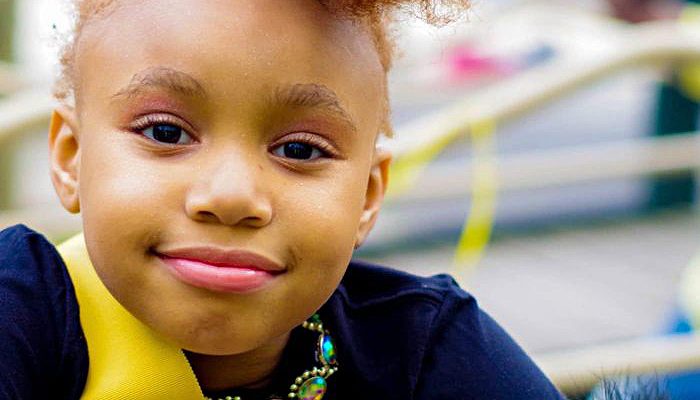Danje nan plon
Anpwazònman plon se danjere epi li ka lakòz efè sante ki dire lontan nan ti bebe ak timoun yo. Li enpòtan anpil pou anpeche timoun yo ekspoze a plon.
Plon se yon pwodui chimik danjere ki te itilize nan penti enteryè nan kay la jouk 1978. Si kay ou te bati anvan 1978, li posib ke gen nan penti plon nan kay ou. Penti plon se danjere lè li kòmanse chip, oswa lè pousyè soti nan penti a vin nan lè a.
Risk pou timoun yo
Timoun ki gen mwens pase 6 yo espesyalman vilnerab a anpwazònman plon. Kò k ap grandi yo absòbe plis plon pase granmoun fè, ak sèvo yo ak sistèm nève yo gen plis sansib a efè yo domaje nan plon.
Pifò timoun ki gen anpwazònman plon jwenn li nan pousyè plon nan kay ki te bati anvan 1978. Lè fin vye granmoun penti fant ak detach, li kreye pousyè plon. Plon pousyè soti nan chipin penti ka rezoud sou tè a ak lòt sifas epi pou yo jwenn sou men timoun yo.
Vil Philadelphia ankouraje tout timoun ki poko gen laj 6 an gen nivo plon yo teste nan laj 1 e ankò nan laj 2.
Ou pa ka di si pitit ou a gen yon nivo plon ki wo nan konpòtman yo. Sèl fason pou konnen se fè yo teste yo.
Menm ti kantite plon ka afekte devlopman mantal ak fizik yon timoun, ak kèk nan efè anpwazònman plon ka pèmanan. Nan nivo trè wo, ekspoze plon ka fatal.
Ekspozisyon plon ka lakòz:
- Lapawòl ak pwoblèm langaj.
- Reta Devlopman.
- Diminye zo ak kwasans nan misk.
- Kowòdinasyon nan misk pòv yo.
- Domaj nan sistèm nève a, ren, ak/oswa odisyon.
- Kriz ak san konesans (nan ka nivo plon ekstrèmman wo).
Si yon timoun gen nivo plon ki wo
Si pitit ou a gen yon nivo plon 3.5 ug/dL (mikwogram pou chak deciliter) oswa pi wo, yon manm nan Pwogram Plon ak Healthy Homes ap kontakte ou pou pran yon vizit nan kay la. Yo pral detèmine sous la nan plon an ak sa ou ka fè kenbe fanmi ou an sekirite. Sèvis sa a gratis.
Si ou se yon pwopriyetè kay epi ou pa kapab peye reparasyon ki nesesè yo, Vil la ka ede ou jwenn yo gratis. Si ou lwe kay ou, Vil la ap travay avèk mèt kay ou pou fè pwopriyete a an sekirite pou fanmi ou.
Risk nan gwosès
Plon ka pase soti nan yon moun ki ansent nan yon ti bebe ki poko fèt. Si ou gen twòp plon nan kò ou, li kapab:
- Mete ou nan risk pou foskouch.
- Kòz tibebe w la fèt twò bonè oswa twò piti.
- Fè mal nan sèvo tibebe w la, ren, ak sistèm nève.
- Kòz pitit ou a gen pwoblèm aprantisaj oswa konpòtman.
Si ou ansent, ou ta dwe:
- Evite nenpòt reparasyon kay ki ta ka mete ou an kontak ak pousyè penti plon.
- Evite travay nan yon anviwònman kote ou ka ekspoze a plon pousyè.
Risk pou granmoun
Malgre ke ekspoze plon se pi plis danjere pou timoun yo, li danjere pou granmoun tou.
Pou granmoun, plon ka lakòz domaj sante grav nan nivo 40 ug/dL (mikrogram pou chak deciliter) oswa pi wo.
Travay ak plon
Ekspoze pou granmoun anjeneral rive lè yon moun ap travay nan yon anviwònman kote yo ekspoze a plon.
Moun kapab tou ekspoze a plon nan itilize nan pwodwi plon-kontamine.
Si yon moun nan kay ou a ap travay ak pousyè plon, fè yo chanje rad lè yo rive lakay ou. Kenbe soulye travay deyò epi lave tout rad travay separeman nan rès la nan lesiv fanmi an.
Si ou gen enkyetid sou ekspoze plon, pale ak doktè ou.
